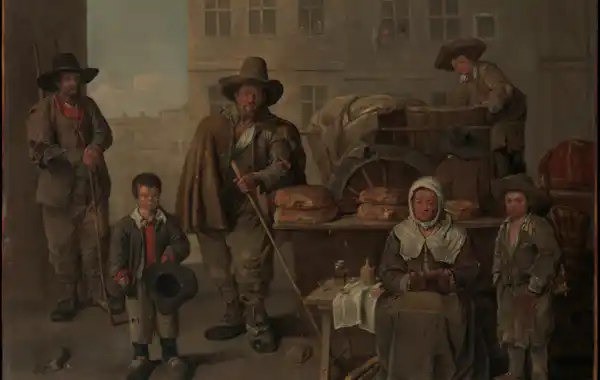From the mid-17th to the mid-18th centuries, the developed world experienced what has come to be called the Industrious Revolution. Wayne Shepheard takes a look at how this transition period would have affected our ancestors.
The Industrious Revolution was the period leading up to the more well-known Industrial Revolution. During both periods, families were impacted by the changes going on around them with respect to their living conditions and occupations.
The Industrious Revolution period began around the time that Europe was just beginning to escape from the ravages of the Little Ice Age.
In a book titled The Industrious Revolution, author Jan de Vries took the view that “[i]n a specific historical period in a specific geographical zone, a new form of household economic behavior became increasingly influential, increasing simultaneously the supply of market-oriented production and the demand for a broad but not indiscriminate range of consumer goods.”
How did the Industrious Revolution affect family life?
From the early days of the Medieval Warm Period, craftsmen and artisans had been involved in the production and trade of goods. This was particularly evident in the growing market towns. By extension, whole households became part of the production processes, independently or through guilds. Notwithstanding the new activities, the bulk of work was still concentrated in agricultural pursuits. It would not be until the beginning of the 17th century that more a third of people would be involved in work away from the farms.
The economic collapse during the Little Ice Age meant that basic income dropped. Families could not generate income or purchase goods and services at the levels past generations had been able to achieve solely from farming. One answer was to expand the market for what goods could be made, with families joining forces to produce more and sell to a broader consumer base.
Mass production, with many people contributing to parts of the manufacturing process, resulted in more finished goods, in larger quantities and at lower prices. While handcrafting was still the primary method of production, involvement of larger groups of people led to more ideas and innovative methods and designs. Demand led supply but at limited production volumes and prices due to the constraints of available resources and income.
Transmission of wealth
The family, or household, was at the core of the developing economy during the Industrious Revolution, and was an entity that performed “functions of reproduction, production, consumption, and resource redistribution among its members, as well as wealth transmission across generations” (deVries, 2008).
In northwestern Europe and British North America, after about 1650, “a growing number of households acted to reallocate their productive resources (which are chiefly the time of their members) in ways that increased both the supply of market-oriented, money-earning activities and the demand for goods offered in the marketplace.”
One of the ways in which this new “wealth” from consumerism may be measured is in the investigation of probate inventories. All across Europe, records from the 17th and 18th centuries show many more families having acquired a variety of quality goods that people rarely had in previous centuries. Many of the products had not even been made in quantity prior to this period. During the period of the Industrious Revolution the value of households grew substantially in most regions nothing in the early 1600s to a major portion of imported goods by the late 18th century.
The societal changes caused by the additions of these products were not all benign, but many of them significantly altered the diets of Europeans for the better, as modern research has shown (Mintz, 1986).
About the author
Wayne Shepheard is the author of ‘Surviving Mother Nature’s Tests: the effects of climate change and other natural phenomena have had on the lives of our ancestors (with examples from the British Isles)’ (2018).







